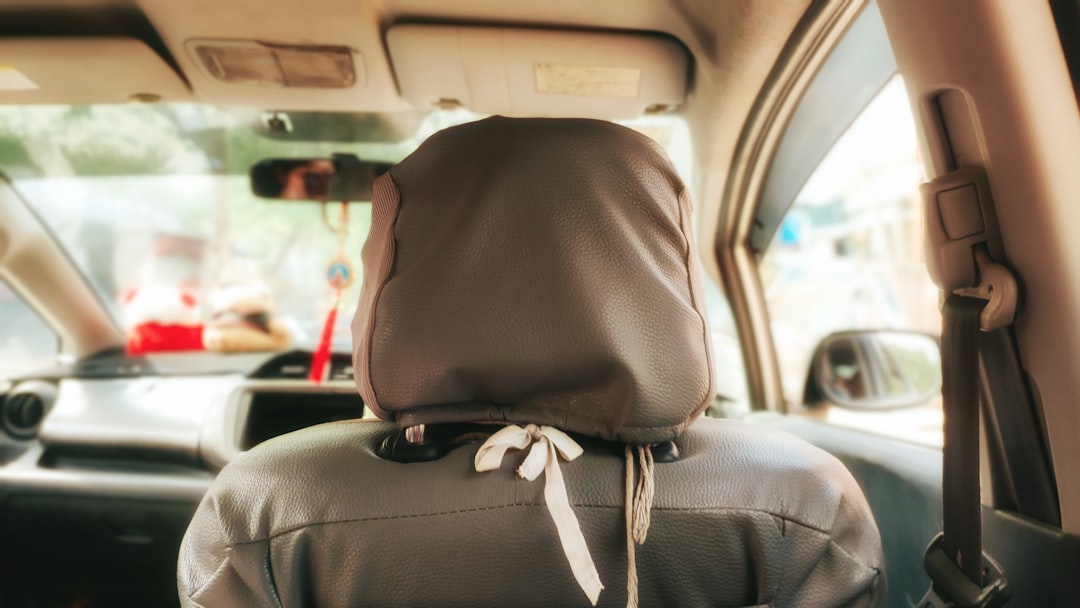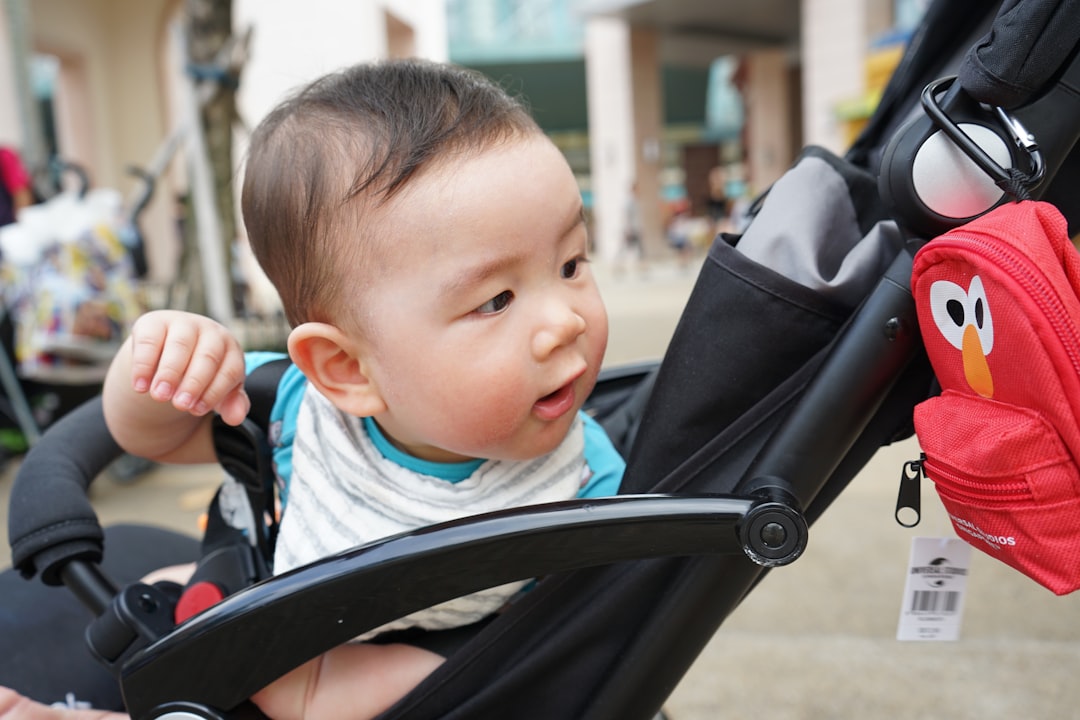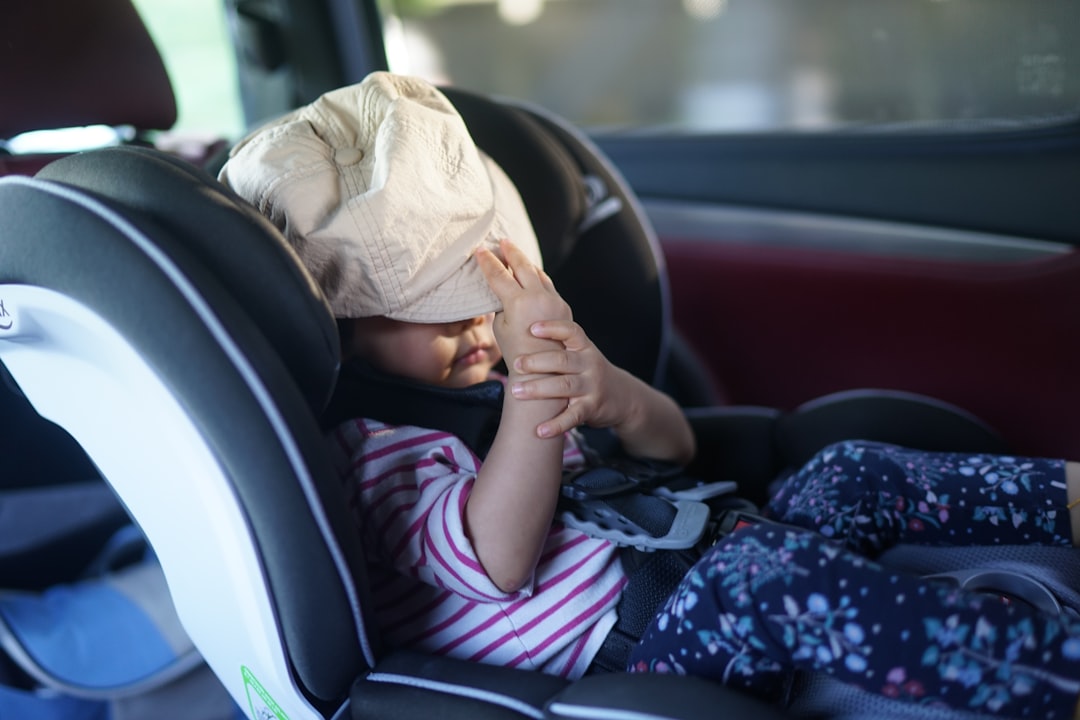

Engage prospects with a scan and streamline customer engagement with FREE QR code marketing tools by Sona – no strings attached!
Create a Free QR CodeFree consultation

No commitment

Engage prospects with a scan and streamline customer engagement with FREE QR code marketing tools by Sona – no strings attached!
Create a Free QR CodeFree consultation

No commitment
QR codes have transformed baby car seat retailers from static displays into dynamic, measurable sales drivers. Whether it’s attracting new parents, enhancing in-store education, or providing instant access to safety certifications and user manuals, QR codes replace cumbersome information delivery with seamless, mobile-friendly interactions that capture real-time engagement data and boost conversions.
Imagine knowing exactly which product displays or marketing materials generate the most customer interest—and being able to optimize campaigns on the fly without costly reprints. With Sona QR, you can create dynamic, trackable QR codes in seconds, update campaigns instantly, and connect every scan directly to revenue. No missed opportunities, just smarter, more profitable customer journeys.
Start for free with Sona QR today and turn every scan into a safer, smarter purchase decision.
The best baby car seat retailers online include well-known stores that offer a wide selection of certified and tested car seats with customer reviews and reliable return policies.
To ensure a baby car seat is installed correctly, follow the manufacturer's instructions carefully, use a car seat inspection station, or seek help from certified child passenger safety technicians.
The safest baby car seats can be found through retailers that stock models meeting the latest safety standards and have high safety ratings from recognized testing organizations.
Current promotions for baby car seats can be found on retailer websites, including seasonal sales, bundle offers, and discounts on selected models.
To recycle an old baby car seat, check local recycling programs or contact manufacturers and retailers that may offer recycling services or disposal guidelines.

In today’s digitally driven world, qr codes in marketing are transforming how baby car seat retailers connect with safety-conscious families. As modern shoppers research, compare, and purchase car seats both in-store and online, bridging the gap between physical displays and digital resources becomes critical for driving conversions and delivering education where it matters most. QR codes now serve as an essential tool in addressing friction points between parental research, safety standards, and seamless purchasing experiences, especially as retailers face the challenge of engaging high-value prospects before they leave.
Whether surfacing installation guides, authenticating product certifications, or collecting real-time reviews, QR codes empower baby car seat retailers to drive quality engagement without adding complexity for busy parents. The lack of visibility into who is engaging with displays or packaging often results in missed follow-up opportunities and lost conversions, as potential customers leave without submitting a form or making a decision. Because QR codes do not require an app or account, they unlock instant access to video tutorials, compatibility checkers, and exclusive incentives directly from showroom floors, packaging, or promotional materials, creating a frictionless experience that naturally captures valuable engagement data.
Strategically deployed QR code campaigns accelerate shopper journeys and enable verified safety content at the point of decision, while making high-intent engagement trackable. This shift addresses common pain points, such as disconnected campaigns causing inconsistent messaging or the risk of missing key upsell moments when customer signals are not surfaced. This guide explains how to leverage QR code solutions to streamline baby car seat discovery and conversion, while finally capturing the data needed to refine your marketing approach and close the loop between offline and online activity with offline attribution.

QR codes bridge the gap between physical touchpoints and digital outcomes, making it easier to keep parents engaged and convert interest into informed purchases. This is especially useful when high-value prospects never make it into your CRM through traditional form fills. The most effective programs replace analog friction such as printed brochures, paper warranty cards, and manual appointment scheduling with on-demand digital experiences.
Start by reframing QR codes as the front door to your buyer journey rather than a novelty on a sign. Every scan can lead to a relevant next step such as watching the correct installation video, checking vehicle compatibility, or booking a certified technician appointment. When those journeys are tagged and measured, you can track progress from first scan to purchase and beyond, then use the signals to improve merchandising and marketing.
Here is how to do it effectively:
By streamlining education, authentication, and follow-up through QR campaigns, baby car seat retailers remove analog bottlenecks in favor of digital journeys that lift customer satisfaction and reduce abandonment. Advanced tools such as Sona QR let you attribute each scan to its source, sync high-intent actions to your CRM, and nurture prospects who might otherwise remain invisible with tailored email, SMS, and ad retargeting.

For baby car seat retailers balancing offline discovery and online research, QR codes address the chronic challenge of unknown or unclaimed traffic. Many parents study product labels, compare across brands, and interact with displays, yet they often leave without taking measurable action. QR codes enable those moments to become actionable and trackable, which is crucial in a category guided by safety, standards, and trust.
Parents are not looking for more marketing noise. They want clarity, proof, and confidence. QR codes deliver utility in seconds: scan to see installation videos, verify a product’s safety certification, or book time with a certified child passenger safety technician. When those utilities are connected to analytics and CRM workflows, you gain insight into intent and timing that was previously inaccessible.
Examples in action: QR codes on appointment cards streamline booking with certified technicians, reducing missed opportunities by catching interest when it is highest. Dynamic signage linked to limited-time bundles or trade-in events ensures that high-intent visitors receive relevant offers. Printed flyers mailed to new-parent lists can drive RSVPs to local installation clinics and nurture subscribers with safety content that builds long-term trust.
Baby car seat retailers often struggle to identify which shoppers are most engaged and to collect the right data for follow-up. Choosing the right QR format ensures each scan triggers a valuable action, whether it is pre-purchase research or post-purchase registration.
Start by mapping formats to outcomes. If the goal is education, link to content-rich landing pages or videos. If the goal is appointment booking or product registration, use forms that capture contact details and preferences. For long-term loyalty, consider app download links or vCards that keep your brand and service contacts accessible.
With a unified QR platform such as Sona QR managing both static and dynamic codes, baby gear retailers can avoid campaign fragmentation. You can keep offers, instructions, and follow-up aligned while updating content behind existing print assets whenever needed.

Growth in this category comes from meeting parents at the exact moment of uncertainty and turning that moment into clarity and action. QR codes allow you to position timely next steps on the physical surfaces shoppers already encounter, then attribute outcomes to the touchpoints that worked.
Audit your store and marketing collateral from the perspective of a parent new to car seats. Identify every point where a question typically arises: fit, safety rating, ease of install, stroller compatibility, travel regulations, and upgrade timing as the child grows. Place QR codes that resolve the question in one scan and capture intent signals along the way.

Every high-performing QR program starts with a few practical, high-value use cases that map to the buyer journey and ongoing ownership. Focus on the moments that determine confidence: research, installation, and validation. Then build automation and analytics around those interactions.
These use cases educate buyers, minimize misuse, and populate valuable review and engagement data. They also connect your in-store experience to measurable digital actions that support attribution and long-term customer relationships.
Each scan is a behavior signal that can be used to personalize follow-up. When QR codes are deployed thoughtfully across the journey, your audience naturally segments itself by need, interest, and timing. The result is smarter retargeting playbook and less wasted messaging.
Begin by defining audience distinctions that matter in this category. For instance, separate expecting parents researching their first seat from experienced parents upgrading to a booster. Consider owners seeking installation help versus shoppers comparing fit. Then map QR codes to the content and outcomes that identify these segments.
With Sona QR, each code becomes a smart entry point into your funnel. You can capture data that supports precise retargeting, move shoppers forward with relevant content, and alert staff when high-intent behavior appears so they can offer help at the right moment.
QR codes connect your physical presence with digital systems, ensuring consistency and continuity across channels. When integrated well, they turn passive media into interactive experiences that gather data and advance the buyer journey.
Use them to unify messaging between print, store environments, and digital campaigns. A parent who sees a billboard about a safety clinic should encounter the same message in-store and on social. QR codes make those connections measurable so you can refine creative and placement over time.
Centralized scan data through Sona QR allows you to monitor performance and sync engagement to your CRM and ad accounts. This creates a connected offline-to-online funnel where every touchpoint is measurable and improvable.
To move from ideas to impact, run QR campaigns as structured projects with clear goals, assets, and analytics. The steps below will help you deploy effectively and iterate quickly.
Identify the one outcome that matters most for your next quarter. For baby car seat retailers, strong candidates include driving RSVPs for installation clinics, increasing product registrations for recall protection, or encouraging verified reviews within two weeks of purchase. Align the use case with your current bottleneck, such as low in-aisle conversion or poor post-purchase engagement.
Define the offer and value message that will earn the scan. Examples include “Scan to check your vehicle fit,” “Scan for a two-minute installation guide,” or “Scan to book a free fitting with a certified technician.” Make the promise specific and time bound when possible.
Choose your format based on the action you need. Use static codes for permanent resources such as a PDF of an installation guide. Use dynamic codes for trackable, editable campaigns where you want analytics, retargeting, and flexibility to update destinations without reprinting.
Decide on the destination. If you need data capture or scheduling, route to a short form or booking tool. If your goal is education, route to a responsive landing page with clear next steps. Use Sona QR to generate the code, add UTM parameters, and configure device-based routing if necessary.
Make the code scannable from a realistic distance for each placement. Use high contrast, ample quiet space, and a minimum size appropriate for the medium. Add a brand logo and a prominent frame or caption that communicates the benefit rather than a generic “Scan me.”
Test across devices, angles, and lighting. Validate that the landing experience loads quickly on mobile and that analytics are firing. Run a brief A/B test on calls to action, such as “Scan to check fit” versus “Scan to see if it fits your car,” and keep the winner.
Roll out to placements aligned with the shopper journey. In-store, prioritize shelf talkers, demo stands, and product tags where questions arise. Off-site, use direct mailers, parenting class handouts, community bulletin boards, and local billboards near family destinations.
Sequence your deployments. Launch first where you expect the most lift, then expand. Train staff to reference the QR codes during conversations and to demonstrate how scanning yields instant help. Provide staff with a quick script and a reference card with the key QR destinations.
Instrument every code with unique parameters so you can compare performance by location, creative, and placement. Monitor scan volume, video completion rates, form conversion, appointment bookings, and review submissions. Identify drop-off points and refine the landing page or CTA to address them.
Use insights to iterate quickly. If many scans occur on weekends, schedule promotions or clinics accordingly. If certain models draw more installation views than others, adjust your signage or merchandising to guide shoppers to the right configuration sooner. With Sona QR and Sona, connect scans to buyer journeys and revenue to prove impact. Sona, an AI-powered marketing platform for identity resolution, data activation, and attribution, helps unify touchpoints and turn first-party signals into measurable outcomes.

A common frustration for baby car seat retailers is not knowing which interactions lead to pipeline growth. Shoppers may spend time at a demo stand or ask a quick question, then leave without a trackable signal. With the right analytics in place, QR codes turn these anonymous moments into measurable steps toward purchase.
Think beyond raw scan counts. The true value comes from linking scans to subsequent actions and revenue. By attributing content views, registrations, and appointments to specific codes and placements, you can see which messages and locations drive outcomes and where to invest more.
The result is a closed-loop system where your offline media behaves like digital media. You can double down on what works, fix what does not, and show clear ROI on every QR-enabled asset.
Scaling QR success requires consistency and discipline. The most effective programs standardize code creation, train staff to promote scanning, and automate follow-ups so value arrives instantly after engagement.
Focus on two goals: make scanning the default behavior for shoppers and make responding the default behavior for your systems. That means a clear payoff for the scanner and an automated workflow on your side that continues the conversation.
When combined with Sona QR integrations, every scan can update your CRM, trigger alerts for high-intent behavior, and enroll shoppers into nurturing sequences that are relevant and timely.
For baby car seat retailers, QR codes have emerged as a key growth engine, transforming every product touchpoint into a trusted, measurable entry point for conversion. By solving pain points around lost prospect tracking, missed engagement signals, and fragmented attribution, QR codes enable a modern, data-rich buying experience that supports safety and confidence.
Here is what a well-executed program delivers:
Forward-thinking retailers who implement dynamic, trackable QR codes with platforms like Sona QR and Sona.com will convert fleeting in-aisle interest into meaningful results. The outcome is higher engagement, better customer education, and a measurable lift in revenue and reputation. By turning print, packaging, and store fixtures into digital gateways, you bridge offline and online behavior, elevate safety outcomes, and earn long-term trust from families who value clarity and care. Start creating QR codes for free.
QR codes have transformed baby car seat retailers from simple product displays into interactive, measurable sales drivers. Whether it’s accelerating customer acquisition, enhancing in-store experiences, or providing instant access to safety information and promotions, QR codes replace static signage with engaging, mobile-friendly interactions that capture valuable data to boost conversions. Imagine knowing exactly which product labels or displays lead shoppers to purchase—and being able to optimize on the fly.
With Sona QR, you can create dynamic, trackable QR codes in seconds, update campaigns instantly without costly reprints, and link every scan directly to sales performance. No more guessing which marketing efforts work—just smarter, more effective customer journeys that turn browsers into buyers. Start for free with Sona QR today and transform every scan into a safer, smarter sale.
The article does not list specific retailers but highlights that many baby car seat retailers use QR codes to connect shoppers with safety information and purchasing options online.
Use QR codes found on product packaging, demo stands, or manuals to access model-specific installation videos and guidance to ensure correct installation.
Look for baby car seats that provide QR codes linking to verified safety certifications, crash test summaries, and certified technician reviews to confirm safety standards.
Promotions can be accessed via QR codes on in-store signage, direct mailers, or product packaging that link to limited-time bundles, trade-in events, or exclusive offers.
The article does not provide information about recycling old baby car seats.
QR codes bridge offline and online experiences by providing instant access to installation guides, safety certifications, appointment booking, and reviews, making research and purchase easier and trackable.
Common QR formats include web links for educational content, mobile-friendly forms for registrations and bookings, app download links, vCards for contact sharing, and SMS or email triggers for messaging.
QR codes are placed on in-store displays, demo stands, product packaging, direct mailers, receipts, local billboards, and transit ads to provide relevant information and offers at key decision points.
Scan QR codes on demo stands, flyers, or receipts that link directly to appointment booking calendars for certified technician fittings or safety checks.
Retailers use unique QR codes with analytics to track scan rates, time spent on content, form completions, and appointments, linking these actions to CRM data for attribution and optimization.
Use Sona QR's trackable codes to improve customer acquisition and engagement today.
Create Your FREE Trackable QR Code in SecondsJoin results-focused teams combining Sona Platform automation with advanced Google Ads strategies to scale lead generation

Connect your existing CRM

Free Account Enrichment

No setup fees
No commitment required

Free consultation

Get a custom Google Ads roadmap for your business






Launch campaigns that generate qualified leads in 30 days or less.
